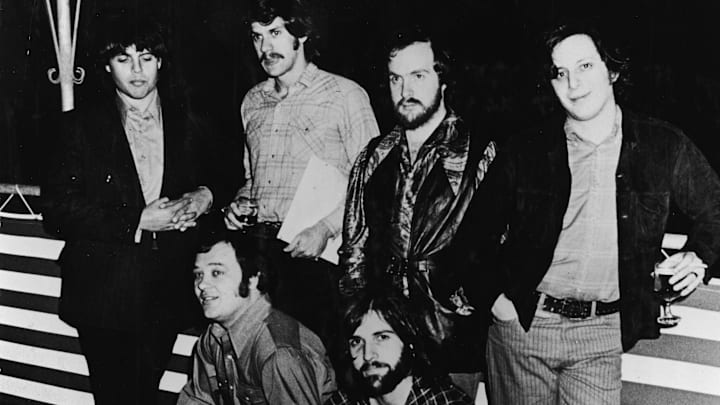Blood, Sweat & Tears
I'll give you a pass if you weren't familiar with that first group. But BS&T was a monster of the end of the 1960s and early 1970s rock scene. 176 members strong - sorry, that's how many musicians have been with the group at one point or another, counting fill-ins. Blood, Sweat & Tears was one of the most successful bands to blend the explosion of horns with the roar of guitars.
They released their first album, Child is Father to the Man, early in 1968. It peaked at number 47, but better things were coming. Their eponymous album came out in December and hit number one, eventually reaching multi-platinum status. Their three biggest singles all charted at number two the following year.
Surely, even the newest fans of the genre know "You've Made Me So Very Happy," "And When I Die," and "Spinning Wheel." Their follow-up album, Blood Sweat & Tears 3, also charted at number one in 1970.
Talk about rotating a roster, Blood, Sweat & Tears went through musicians like Mickey D's runs through 16-year-olds. Founding member and lead vocalist Al Kooper (not the guy with the snake) was replaced by David Clayton-Thomas within their first year. 18 months later, Clayton-Thomas was off on solo projects.
By 1974, only two of the eight founding members were still with the band. Drummer Bobby Colomby was the last man standing. He left in 1977. Their final studio album, Nuclear Blues, was released in 1980, but the band is still touring today. At this point, I may be in the band. I knew my experience as second-chair trombone in high school would pay off someday.
Chase
Led by trumpeter and frontman Bill Chase, this creatively-named band is the second of three Chicago-based groups. In fact, two of the songs on their third album were co-written by Kim Peterik of Ides of March, who also sang on the album. But I'm getting ahead of myself here. Let's go back to the beginning.
Chase - the performer, not the band- had legit jazz chops, as he was lead trumpet for jazz giants Maynard Ferguson, Stan Kenton, and Woody Herman. In April of 1971, he formed his own group, uniquely featuring four trumpets. He added keyboards, a bass, one guitar, and percussion along with another vocalist. Their debut album, Chase, was released in April of 1971.
I don't know if he was a marketing genius or not, but the music was hot. Single "Get It On" reached number 24 on the charts. And no, this is not the same song as the T. Rex hit, "Bang a Gong," which originally had the same title and was released just three months later.
The band was nominated for a Grammy as Best New Artist, but lost to Carly Simon. Their second album, Ennea, didn't do nearly as well, charting just one single, "I Can Feel It." That's probably why Chase called in Peterik for 1974's Pure Music. That didn't repeat the commercial success of either of their first two albums. Sadly, a plane crash ended things for Bill Chase, along with three other band members, later that same year.
Continued on next slide...
